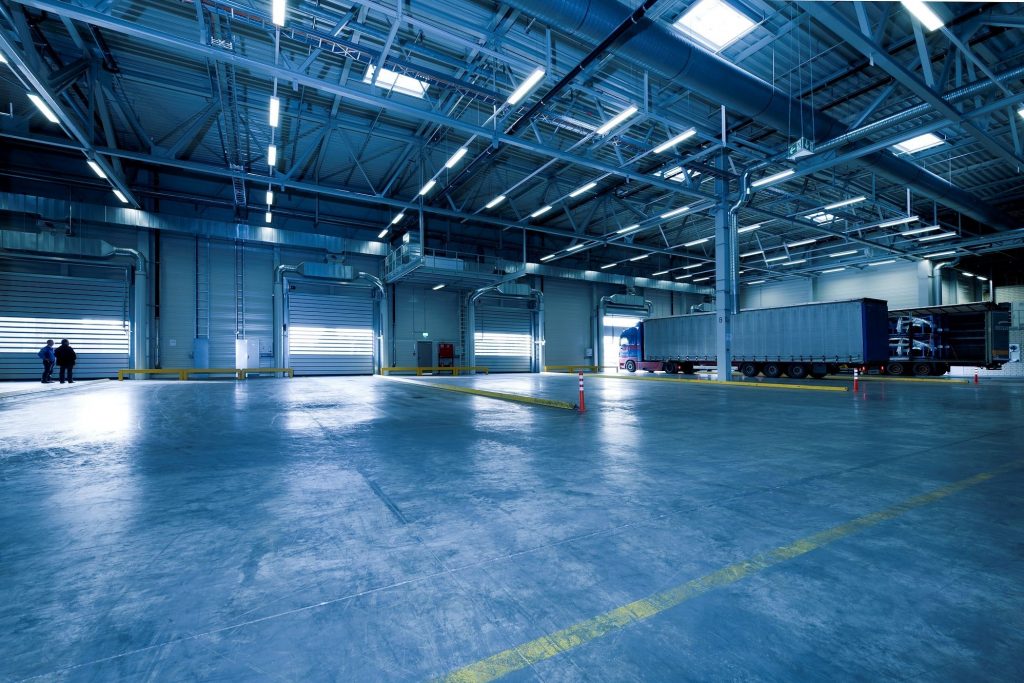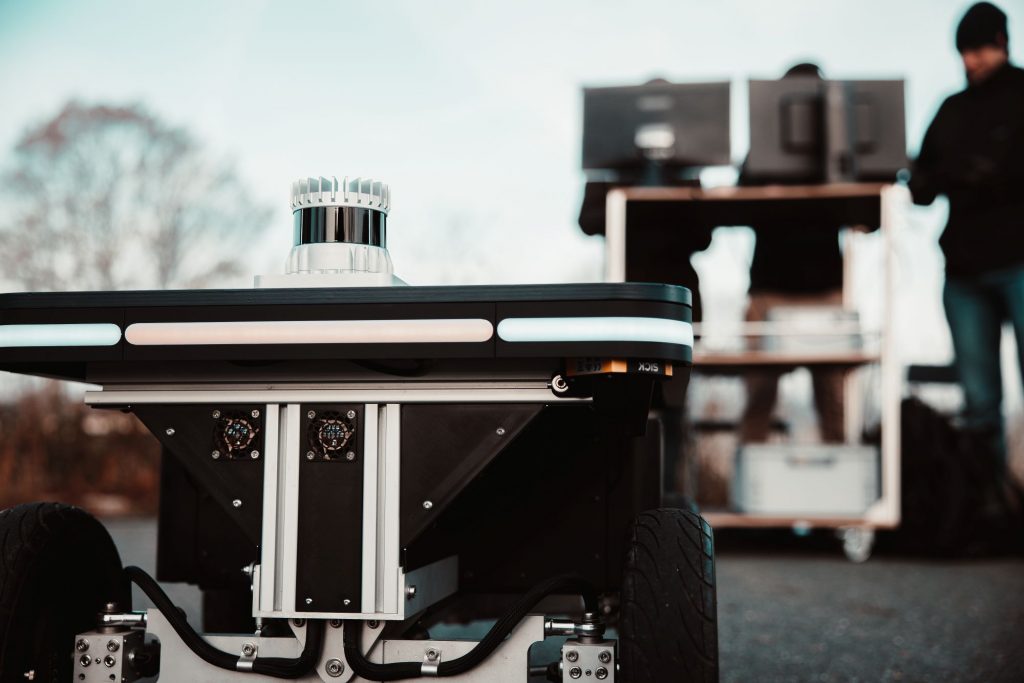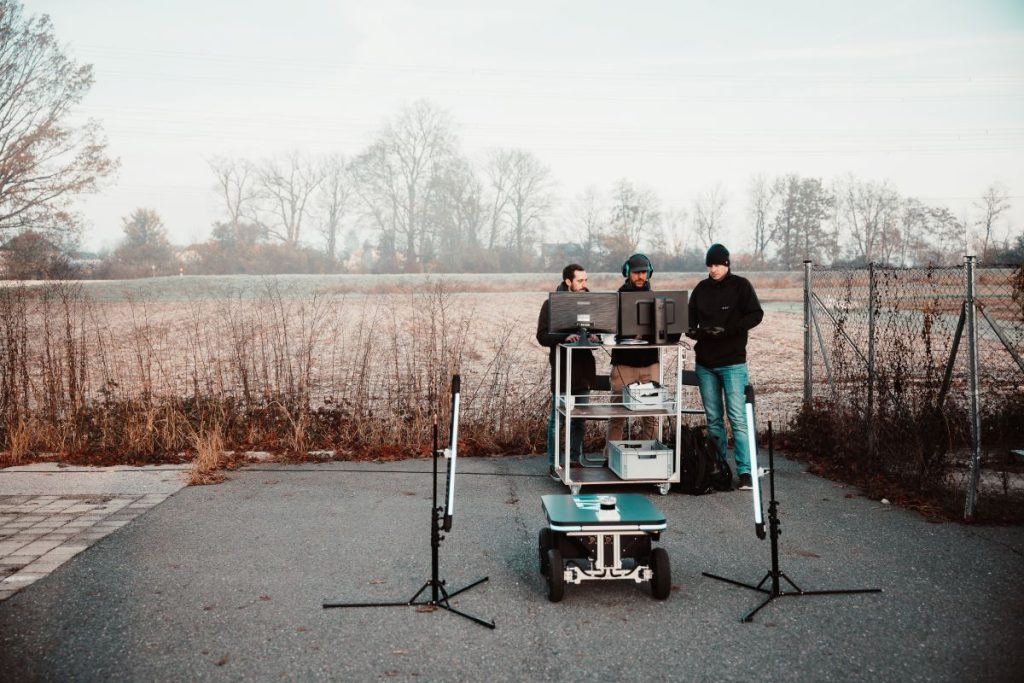How ARTI expanded the capabilities for autonomous robotic AI software Kits by integrating satellite data with the help of ESA BIC Austria funding. A recap on the ARTI journey to outdoor robots.
The Standard

In recent years, the use of autonomous mobile robots in indoor areas, such as warehouses or production halls, has become state-of-the-art. Today, AGVs, used for intralogistics processes, are already an indispensable part of Industry 4.0, where the market pressure regarding price and efficiency is high. Less standard is the use of mobile outdoor robots beyond the standardized and structured conditions of the production hall. Switching between indoor and outdoor conditions during transport is also often difficult. Very exceptional is the use of autonomous mobile outdoor robots in vast unstructured terrain.
The challenges for indoor robots

The main aim of ARTI during the incubation phase at ESA BIC Austria was to integrate earth observation data/satellite data into the ARTI AI Kits. Thus enabling and improving the software for use in urban, outdoor, and less structured environments.
For a better understanding of what we have been working on in the two years of the incubation phase, let us backtrack a little. Suppose the environment is flat and very structured, like in a factory hall. In this case, static obstacles are known, and dynamic obstacles (e.g., people) are trained in interaction with autonomous mobile robots, which means that the navigation software has more or less an “easy” job. No insecurities or unexpected developments need to be considered, and the movement is predictable.

The challenge for outdoor robots
This changes when the factory hall is left behind. When the autonomous robot moves around in urban outdoor scenarios or on outdoor corporate premises. The robot’s reach becomes much more extensive. The speed is no longer continuous, and path planning must consider slopes, inclines, or road damage over longer distances. There are also many more “players” in the area(e.g., other vehicles such as lorries or cars, bicyclists, and pedestrians). As well as various environmental influences, such as the sun’s position, reflections, fog, rain, etc. All factors impact sensor perception and driving behavior. In addition, the structure of the surroundings is roughly known (e.g., through street maps), which requires localization and navigation. Apart from minor irregularities such as pavement edges, the ground is mainly well-passable. These complex conditions already challenge AI navigation software.
Now, imagine this scenario with even fewer structures to orient yourself to and even more uncertainty factors. Factors include steep gradients, obstacles, uneven ground, and possibly more extreme environmental conditions. Such scenarios are hardly manageable for advanced navigation software for mobile autonomous robots, and the industry has no “best practice” examples. Moreover, creating reliable maps of the driving areas is difficult or hardly possible because the areas naturally change a lot over time. Keeping mapping material up-to-date would require a lot of prior effort.
Going outdoors while incubated
During the incubation phase at ESA BIC Austria, the ARTI AI Kits were better adapted to the conditions of outdoor driving. Integrating earth observation data, GNSS, and satellite data supports outdoor navigation and leads to more reliable and stable performance. This information is an additional source for navigation and consolidating the information pipeline. Furthermore, route planning, route sequences, navigation, localization, and obstacle avoidance have incorporated information from outer space. So they deliver more dependable results with quicker and easier deployment to use cases in larger areas. ARTI Outdoor Robotics Expert Raphael Hoheneder explains:

Raphael Hoheneder, ARTI expert for outdoor navigation“The information flows into semi-automatic roadmaps. These roadmaps represent the ability of a robot to move through different types of terrain, for example, gravel paths, light forests with bushes, and meadows, all with varying gradients. Consequently, the roadmaps provide us with possible routes specially adapted to the robot’s capabilities.”
Moreover, the proprietary robotic platform CHASI was adapted to outdoor use. Now it is adapted to harsher conditions to test the newly developed outdoor functionalities. Tests in outdoor scenarios have, for example, been carried out in remote (e.g., Seetaler Alpe) and semi-remote environments (e.g., Mur area).
Furthermore, ARTI also developed a primary fleet management tool, especially for outdoor tasks. The outdoor robot fleet management solution is based on developments from our partner company ScaliRo. More information can be found on the specific product page.

Opening up new worlds with outdoor robots

“The ability of the ARTI software to function safely and reliably in outdoor and unstructured environments opens up a vast range of new areas of application. In addition to agriculture, transport, and construction, there is as well as my favorite topic, search and rescue. The incubation period at ESA BIC Austria was an important milestone for us for the field application. I am grateful for the successful collaboration! We are already excited about the outdoor solutions we will implement with our partners and already see a variety of new applications and challenges. “
ARTI CEO Konstantin Mautner-Lassnig
ARTI is convinced that our approach will significantly improve software navigation performance in the outdoor sector. Thus expanding the application scope of autonomous mobile robots.



